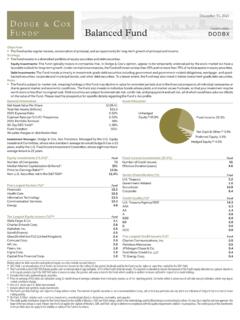Transcription of INCREASING READING COMPREHENSION OF ELEMENTARY ... …
1 INCREASING READING COMPREHENSION OF ELEMENTARY STUDENTS THROUGH FLUENCY-BASED INTERVENTIONS Veda S. Neumann, Dorothy K. Ross, Anita F. Slaboch, An Action Research Project Submitted to the Graduate Faculty of the School of Education in Partial Fulfillment of the Requirement for the Degree of Masters of Arts in Teaching and Leadership Saint Xavier University & Pearson Achievement Solutions, Inc. Field-Based Master s Program Chicago, Illinois May, 2008 i TABLE OF CONTENTS ABSTRACT ..iii CHAPTER 1: PROBLEM STATEMENT AND CONTEXT.
2 1 General Statement of the Problem ..1 Immediate Context of the Problem ..1 Local Context of the Problem ..15 National Context of the Problem ..19 CHAPTER 2: PROBLEM DOCUMENTATION ..20 Evidence of the Problem ..20 Probable Causes ..27 CHAPTER 3: THE SOLUTION STRATEGY ..37 Review of the Literature ..37 Project Objective and Processing Statements ..43 Project Action Plan ..43 Methods of Assessment ..44 CHAPTER 4: PROJECT RESULTS ..47 Historical Description of the Intervention ..47 Presentation and Analysis of Results.
3 53 Conclusions and Recommendations ..63 REFERENCES ..67 APPENDICES ..77 Appendix A: Student ..77 Appendix B: ..78 ii Appendix C: Appendix D: Paired Appendix E: Echo Appendix F: Choral Appendix G: Poetry Appendix H: Reader s iii ABSTRACT The authors of this action research project report implemented oral READING fluency-based interventions for the purpose of improving students READING COMPREHENSION . Six students in grade three, six students in grade five and six students in grade six participated in the study from Monday, August 27 through Friday, December 7, 2007.
4 Researchers observed that in the targeted READING groups, deficiencies in any element of oral READING fluency were associated with READING COMPREHENSION problems. The teacher researchers used the following tools to document evidence; Dynamic Indicators of Basic Early Literacy Skills (DIBELS) Oral READING Fluency (ORF), which indicated that 50% of students at Site A and 83% of students at Site B were below benchmark score for oral READING fluency. The COMPREHENSION based assessment (Choose-A-Title) resulted in 61% of the students choosing the incorrect title.
5 As a result of the student survey, it indicated that 17% of the students responded almost never when asked I think others like my READING . Students struggles with accuracy, rate, and prosody revealed deficiencies that inhibited the processing of meaning. The interventions implemented were three 20-minute weekly sessions consisting of one session of reader s theater activities including choral READING , echo READING , and poetry, and two sessions of partner READING during which student pairs engaged in repeated oral READING and READING along silently while listening as oral READING was modeled.
6 Teachers are encouraged to model fluent READING illustrating proper rate and accuracy. READING and rereading exercises such as READING with a model reader, choral READING , reader s theater, and partner READING can improve fluency (Vaughn & Linan-Thompson, 2004). As a result of the interventions, students demonstrated increased awareness of the three elements of oral READING fluency: accuracy, rate, and prosody. Students practiced self-monitoring these elements while participating in paired READING and cooperative learning groups.
7 The post data revealed that there was a decrease in students positive responses to I read with expression and feeling . Thirty-three percent of students responded almost always on pre documentation and 28% on post documentation. The usually category declined from 50% to 44%. Students responded best to interventions that involved repeated READING in the form of rehearsal followed by performance, such as choral poetry READING and reader s theater. Students demonstrated engagement in the activities while becoming more realistic in self-evaluation 1 CHAPTER 1 PROBLEM STATEMENT AND CONTEXT General Statement of the Problem The purpose of this action research project was to improve READING COMPREHENSION through oral READING fluency.
8 Students problems with READING COMPREHENSION are revealed through difficulty with one or more of the three elements of oral READING fluency: automaticity, accuracy, and prosody. Fluency rates were determined through DIBELS Oral READING Fluency assessment. COMPREHENSION was assessed by requiring students to identify the main idea of a grade -level passage. Students reported their attitudes about oral READING by responding to a six question survey. Immediate Context of the Problem Site A Site A is a parochial ELEMENTARY school established in 1957 located in a northwest suburb of a major city.
9 This parish was established in October of 1955. At that time, the pastor envisioned the creation of a fully functioning faith community encompassing the church, a convent, a rectory, and school. The parish school opened its doors for classes in September of 1957 for grades 1-6. As the school population increased to about 1,000 students, construction of three additions were underway including eight classrooms, two balcony classrooms, and a junior high wing. Today, the day school services over 500 students and includes preschool, kindergarten, and grades 1-8.
10 Grades 1-4 are self-contained instructional classrooms and grades 25-8 are departmentalized. An extended-day after school program is also available. The faculty consists of 41 teachers and includes full-time instructors of library, physical education, computer, art, and music. The school has co-curricular coordinators or directors including an athletic director, band coordinator, and choral coordinator. Co-curricular programs include foreign language, student council, student newspaper, student yearbook and service outreach groups (Site A school website, 2007).













